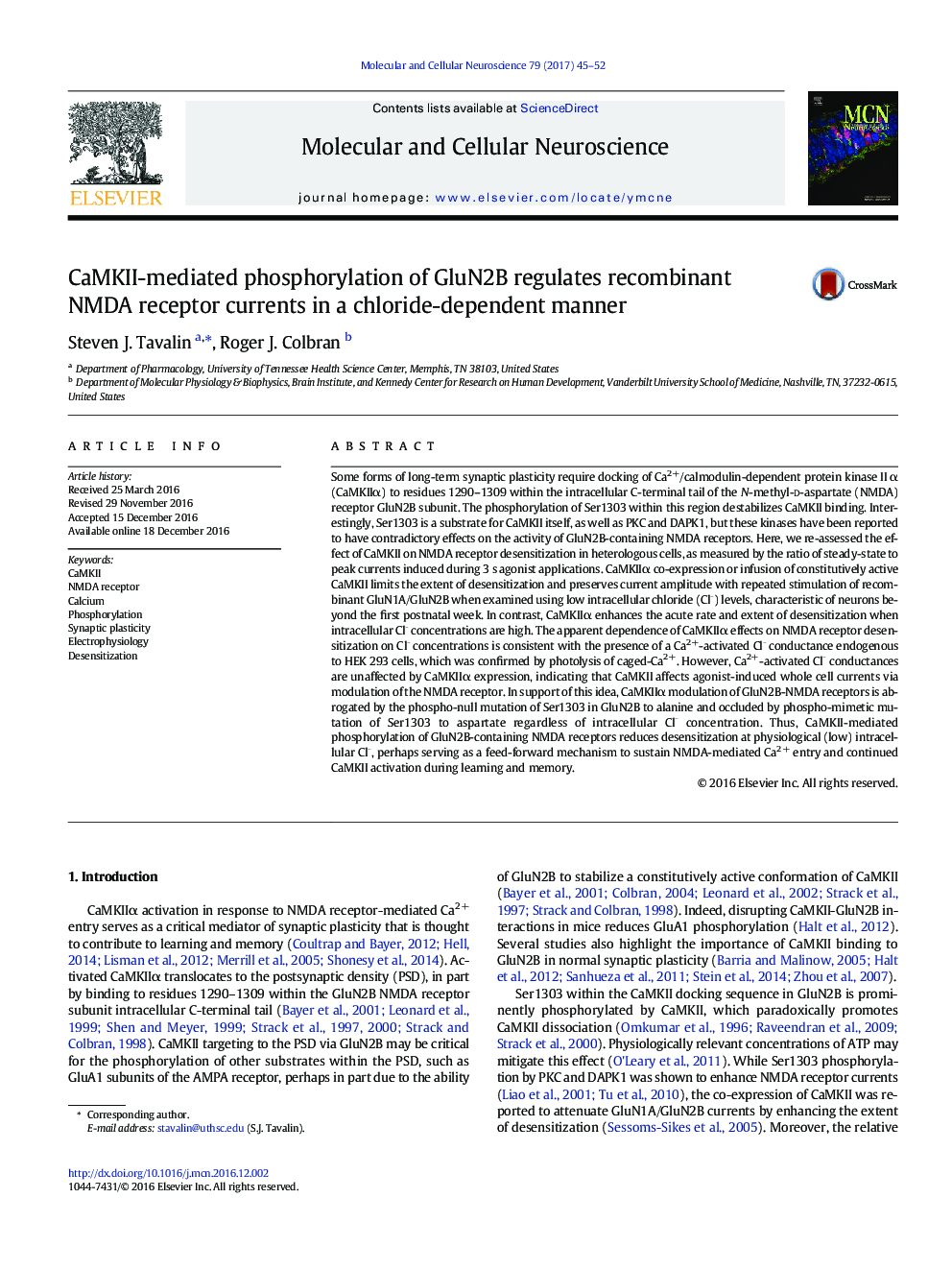| کد مقاله | کد نشریه | سال انتشار | مقاله انگلیسی | نسخه تمام متن |
|---|---|---|---|---|
| 5534433 | 1551127 | 2017 | 8 صفحه PDF | دانلود رایگان |

- Clâ gradients influence CaMKII modulation of GluN2B NMDA receptor desensitization.
- Ser1303 phosphorylation of GluN2B reduces desensitization at low intracellular Clâ
- CaMKII binding to GluN2B does not appear to regulate GluN2B desensitization.
- Sustained GluN2B-NMDAR Ca2+ entry due to CaMKII may enhance synaptic plasticity.
Some forms of long-term synaptic plasticity require docking of Ca2+/calmodulin-dependent protein kinase II α (CaMKIIα) to residues 1290-1309 within the intracellular C-terminal tail of the N-methyl-d-aspartate (NMDA) receptor GluN2B subunit. The phosphorylation of Ser1303 within this region destabilizes CaMKII binding. Interestingly, Ser1303 is a substrate for CaMKII itself, as well as PKC and DAPK1, but these kinases have been reported to have contradictory effects on the activity of GluN2B-containing NMDA receptors. Here, we re-assessed the effect of CaMKII on NMDA receptor desensitization in heterologous cells, as measured by the ratio of steady-state to peak currents induced during 3 s agonist applications. CaMKIIα co-expression or infusion of constitutively active CaMKII limits the extent of desensitization and preserves current amplitude with repeated stimulation of recombinant GluN1A/GluN2B when examined using low intracellular chloride (Clâ) levels, characteristic of neurons beyond the first postnatal week. In contrast, CaMKIIα enhances the acute rate and extent of desensitization when intracellular Clâ concentrations are high. The apparent dependence of CaMKIIα effects on NMDA receptor desensitization on Clâ concentrations is consistent with the presence of a Ca2+-activated Clâ conductance endogenous to HEK 293 cells, which was confirmed by photolysis of caged-Ca2+. However, Ca2+-activated Clâ conductances are unaffected by CaMKIIα expression, indicating that CaMKII affects agonist-induced whole cell currents via modulation of the NMDA receptor. In support of this idea, CaMKIIα modulation of GluN2B-NMDA receptors is abrogated by the phospho-null mutation of Ser1303 in GluN2B to alanine and occluded by phospho-mimetic mutation of Ser1303 to aspartate regardless of intracellular Clâ concentration. Thus, CaMKII-mediated phosphorylation of GluN2B-containing NMDA receptors reduces desensitization at physiological (low) intracellular Clâ, perhaps serving as a feed-forward mechanism to sustain NMDA-mediated Ca2+ entry and continued CaMKII activation during learning and memory.
Journal: Molecular and Cellular Neuroscience - Volume 79, March 2017, Pages 45-52